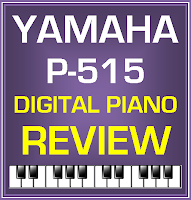 🎹 UPDATED REVIEW – June 15, 2024 | Yamaha P-515 Digital Piano | The Yamaha P-515 at $1599 discount price is a self-contained portable 88-key digital piano from the Yamaha piano company. Yamaha has 3 portable piano-weighted key action digital pianos with built-in speaker systems on the market from $500 to $2000. The 1st and least expensive one called the P-225 ($699 internet price) is focused mainly on piano playing and is an entry level product. The next one up is called the DGX-670 ($849 internet price) which is really not very portable weighing in at over 50 lbs and having a somewhat bulky cabinet. It is also an “entry level” piano in terms of key action, piano sound chip, and pedaling response but it has a ton of fun, interactive “bells & whistles” for people who like having a built-in “one man band” along with other interactive functions and features
🎹 UPDATED REVIEW – June 15, 2024 | Yamaha P-515 Digital Piano | The Yamaha P-515 at $1599 discount price is a self-contained portable 88-key digital piano from the Yamaha piano company. Yamaha has 3 portable piano-weighted key action digital pianos with built-in speaker systems on the market from $500 to $2000. The 1st and least expensive one called the P-225 ($699 internet price) is focused mainly on piano playing and is an entry level product. The next one up is called the DGX-670 ($849 internet price) which is really not very portable weighing in at over 50 lbs and having a somewhat bulky cabinet. It is also an “entry level” piano in terms of key action, piano sound chip, and pedaling response but it has a ton of fun, interactive “bells & whistles” for people who like having a built-in “one man band” along with other interactive functions and features
This model is really meant for the home but can be used in a variety of venues and places. Generally speaking the P-515 is for someone who mainly wants to play piano, although it does have a lot of “bells & whistles” on it that can make it fun to play as well. This model is considered to be affordable 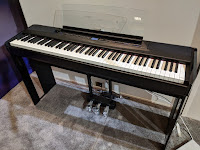 at $1599 internet price (stand & triple pedal optional), especially as compared to other portable digital pianos over $2000. The P-515 has been out for about 5 years. The P-515 does a lot of things including being an overall impressive instrument whether you’re a beginner or an advanced player and has a number of upgrades in it over the previous model including a different key action, improved piano sound engine, new pedaling and pedal response, upgraded operating system, new features, and more. It even has a redesigned look to it, new cabinet materials, and new user interface…almost all good improvements over the previous model, and this P-515 is at a reasonable $1599 price.
at $1599 internet price (stand & triple pedal optional), especially as compared to other portable digital pianos over $2000. The P-515 has been out for about 5 years. The P-515 does a lot of things including being an overall impressive instrument whether you’re a beginner or an advanced player and has a number of upgrades in it over the previous model including a different key action, improved piano sound engine, new pedaling and pedal response, upgraded operating system, new features, and more. It even has a redesigned look to it, new cabinet materials, and new user interface…almost all good improvements over the previous model, and this P-515 is at a reasonable $1599 price.

 This newer piano sound chip in the P-515, which was not in previous models, offers two new grand piano sound samples from the top Yamaha acoustic grand called CFX and also from the top European Bosendorfer grand piano called the Imperial. Yamaha included the piano sound from the Bosendorefer because not only is it a very pleasing and rich European grand piano tone, but it just so happens that Yamaha purchased the Bosendorfer piano company (originally headquartered in Vienna, Austria, Vienna) a number of years ago so that name now belongs to Yamaha and is not their competition anymore. That’s the way to do it…buy up other great companies and have them for yourself. I am
This newer piano sound chip in the P-515, which was not in previous models, offers two new grand piano sound samples from the top Yamaha acoustic grand called CFX and also from the top European Bosendorfer grand piano called the Imperial. Yamaha included the piano sound from the Bosendorefer because not only is it a very pleasing and rich European grand piano tone, but it just so happens that Yamaha purchased the Bosendorfer piano company (originally headquartered in Vienna, Austria, Vienna) a number of years ago so that name now belongs to Yamaha and is not their competition anymore. That’s the way to do it…buy up other great companies and have them for yourself. I am  not sure it was a good move for Yamaha to do that or not because those Bosendorfer grand pianos costs big bucks, but it sure comes in handy to be able to get that type of piano sound on some of the Yamaha digital pianos.
not sure it was a good move for Yamaha to do that or not because those Bosendorfer grand pianos costs big bucks, but it sure comes in handy to be able to get that type of piano sound on some of the Yamaha digital pianos.
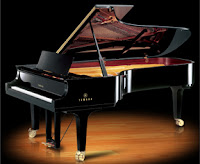 When it comes to the actual tone on Yamaha acoustic grand pianos, the Yamaha CFX piano tone is bright and clear and many players like that sound, especially for pop music.For me, this CFX sampled sound in the P-515 is great to play…but sometimes a bit too harsh as compared to wanting a richer and less brassy piano tone. I have played hundreds of Yamaha acoustic grand pianos and lots of pop music piano players like to play Yamaha and those pianos do have bright clear tone as I previously mentioned. You can reduce the brightness and brassiness of the CFX tone in the P-515 with the editing controls so that you can get that sound to be more mellow, but it’s nevertheless a brighter piano sound than most other brands.
When it comes to the actual tone on Yamaha acoustic grand pianos, the Yamaha CFX piano tone is bright and clear and many players like that sound, especially for pop music.For me, this CFX sampled sound in the P-515 is great to play…but sometimes a bit too harsh as compared to wanting a richer and less brassy piano tone. I have played hundreds of Yamaha acoustic grand pianos and lots of pop music piano players like to play Yamaha and those pianos do have bright clear tone as I previously mentioned. You can reduce the brightness and brassiness of the CFX tone in the P-515 with the editing controls so that you can get that sound to be more mellow, but it’s nevertheless a brighter piano sound than most other brands.
When reducing the brightness of the CFX sound those editing controls can effect the sound of other instrument tones in the piano so it just depends on what you want. But overall I like the CFX stereo piano sound. One thing is for sure, if you are playing along with other live instruments and maybe even a vocalist, the brightness of the CFX piano sound will “cut through” the rest of those instruments and singers to be more easily heard and many pro players do like that aspect of the Yamaha piano sound.
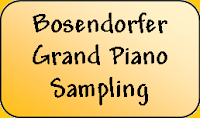 The European Bosendorfer piano sound in the P515 is a richer and more melodic acoustic piano sampled sound as compared to the Yamaha CFX piano sound, based on my playing and comparing both piano sounds. The Bosendorfer sample is less brassy, less bright, and much deeper and richer in tone than the Yamaha CFX grand sound and it’s good for classical music, ballads, and jazz as well as pop, country, Latin, Ragtime, and other genre’s of music. What also makes this piano sound so versatile is the fact that you can also edit the sound and brighten it up in a number of ways with a variety of functions on the P515 including EQ, brightness, and sound boost controls so that it takes on the more of the CFX sound without the extra brassiness that can be associated with the Yamaha CFX piano sound. However, there is one thing about the Bosendorer sound that is quite irritating to me, and that is…it doesn’t sound near as good through stereo headphones as it does through the internal speakers of the piano.
The European Bosendorfer piano sound in the P515 is a richer and more melodic acoustic piano sampled sound as compared to the Yamaha CFX piano sound, based on my playing and comparing both piano sounds. The Bosendorfer sample is less brassy, less bright, and much deeper and richer in tone than the Yamaha CFX grand sound and it’s good for classical music, ballads, and jazz as well as pop, country, Latin, Ragtime, and other genre’s of music. What also makes this piano sound so versatile is the fact that you can also edit the sound and brighten it up in a number of ways with a variety of functions on the P515 including EQ, brightness, and sound boost controls so that it takes on the more of the CFX sound without the extra brassiness that can be associated with the Yamaha CFX piano sound. However, there is one thing about the Bosendorer sound that is quite irritating to me, and that is…it doesn’t sound near as good through stereo headphones as it does through the internal speakers of the piano.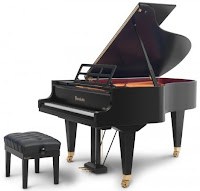 The P515 has a really great internal speaker system in it with 40 watts of power going through 4 speakers and it’s the best internal stereo speaker system Yamaha has ever had in a portable digital piano under $2000. So when playing through the stereo speakers using the Bosendorfer piano sound, then all that stereo sound is very good. But when playing through a good pair of stereo headphones, the Bosendorfer piano sound is much more plain, less resonate and it has a much reduced “stereo sound field” whereas the Yamaha CFX piano sound is much better through headphones because it is using a better headphone sound technology which Yamaha calls “Binaural” sound. The Binaural headphone sound optimizes the CFX acoustic piano sound so that it sounds like it does through the internal stereo speaker system when you listen to it without headphones…and that’s the way it should be and it sounds realistic.
The P515 has a really great internal speaker system in it with 40 watts of power going through 4 speakers and it’s the best internal stereo speaker system Yamaha has ever had in a portable digital piano under $2000. So when playing through the stereo speakers using the Bosendorfer piano sound, then all that stereo sound is very good. But when playing through a good pair of stereo headphones, the Bosendorfer piano sound is much more plain, less resonate and it has a much reduced “stereo sound field” whereas the Yamaha CFX piano sound is much better through headphones because it is using a better headphone sound technology which Yamaha calls “Binaural” sound. The Binaural headphone sound optimizes the CFX acoustic piano sound so that it sounds like it does through the internal stereo speaker system when you listen to it without headphones…and that’s the way it should be and it sounds realistic. But when you play the Bosendorfer sound through the internal speaker system of the P515, it sounds great…full, rich, alive in full stereo…but not so through headphones.This was a big let-down to me since I tend to use headphones quite a bit for practicing. However, there is a feature in the headphone sound setup within the P515 menu which allows you to turn off the binaural “effect” and when you do that the Bosendorfer piano sound through headphones is much better and more realistic and I can live with that. However, when you turn off the binaural effect to get a better headphone experience with the Bosendorfer sound then you lose the binaural effect on the Yamaha CFX sound and so you need to turn that effect back on to get the full benefit of hearing the Yamaha CFX piano sound through headphones.
But when you play the Bosendorfer sound through the internal speaker system of the P515, it sounds great…full, rich, alive in full stereo…but not so through headphones.This was a big let-down to me since I tend to use headphones quite a bit for practicing. However, there is a feature in the headphone sound setup within the P515 menu which allows you to turn off the binaural “effect” and when you do that the Bosendorfer piano sound through headphones is much better and more realistic and I can live with that. However, when you turn off the binaural effect to get a better headphone experience with the Bosendorfer sound then you lose the binaural effect on the Yamaha CFX sound and so you need to turn that effect back on to get the full benefit of hearing the Yamaha CFX piano sound through headphones.
I am not sure why Yamaha did not include the other acoustic pianos sounds (particularly the Bosendorfer sound – my favorite) in the Binaural stereo sound environment of the P-515, but they didn’t. You need to juggle back & forth in the piano menu display to get the better settings as I just described. Yamaha could have done a lot better when it comes to listening to the Bosendorfer piano sound and the other acoustic piano variations through stereo headphones.
 OK, now on to the the acoustic piano sound “tonal dynamics” and expressiveness of sound along with the talking about the quality of the 256-note polyphony piano sound, the range of tonal dynamics, the organic nature of the piano sound with overtones, sympathetic vibrations, and even distribution of soft to loud without noticeable jumps in volume. I can say for sure that the P515 does a great job in piano expressiveness while
OK, now on to the the acoustic piano sound “tonal dynamics” and expressiveness of sound along with the talking about the quality of the 256-note polyphony piano sound, the range of tonal dynamics, the organic nature of the piano sound with overtones, sympathetic vibrations, and even distribution of soft to loud without noticeable jumps in volume. I can say for sure that the P515 does a great job in piano expressiveness while offering a huge range of tonal dynamics for mellow to bright and everywhere in-between. This is not the “cheaper” tone of the previous models but a noticeable upgrade to the authenticity and natural sound when playing piano. It just sounds more alive and resonate than ever before. But it is important to remember that the overall character of the CFX piano sound is still bright, clear, and a bit brassy (sometimes) so if you like that type of piano sound then you’ll really like the CFX piano sound. The Bosendorfer sound is the one I like more and I believe it is the favorite of the majority of people who have played the P-515 and/or heard the two piano sound samples.
offering a huge range of tonal dynamics for mellow to bright and everywhere in-between. This is not the “cheaper” tone of the previous models but a noticeable upgrade to the authenticity and natural sound when playing piano. It just sounds more alive and resonate than ever before. But it is important to remember that the overall character of the CFX piano sound is still bright, clear, and a bit brassy (sometimes) so if you like that type of piano sound then you’ll really like the CFX piano sound. The Bosendorfer sound is the one I like more and I believe it is the favorite of the majority of people who have played the P-515 and/or heard the two piano sound samples.Of the 9 acoustic piano sounds in this model, the next piano sound I really like besides the Yamaha CFX and Bosendorfer sounds is the “ballad” piano. The other acoustic piano sounds generally are a bit bright for me, but can be useful depending on the type of music your are playing and depending on what playing environment you’re in, you may like them. But overall, I would be primarily using the Bosendorfer piano sound and CFX piano sample and then editing them to make my own variations which for me would then turn into additional piano sounds that I would also enjoy playing.
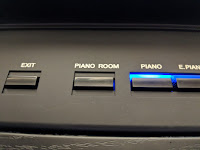 Speaking of editing or adjusting the piano sound, Yamaha has designed a clever and quick way to do that directly from the control panel with a button called “Piano Room.” When you press the Piano Room button then in the LCD display screen you will see the first setting in the Piano Room is called “Lid Position,” and you’ll see a virtual piano picture with an adjustable lid position and you can set that lid with the navigation buttons on the control panel to “full, half, or closed” position and when you do that then the sound goes from fuller & brighter to mellower & muted. The next Piano Room setting is called “Brightness” and this setting adjusts the over brightness or mellowness of the piano up or down from 0 – 10 so there is a wide range and it does have a noticeable impact on the overall piano sound as does the Lid Position.
Speaking of editing or adjusting the piano sound, Yamaha has designed a clever and quick way to do that directly from the control panel with a button called “Piano Room.” When you press the Piano Room button then in the LCD display screen you will see the first setting in the Piano Room is called “Lid Position,” and you’ll see a virtual piano picture with an adjustable lid position and you can set that lid with the navigation buttons on the control panel to “full, half, or closed” position and when you do that then the sound goes from fuller & brighter to mellower & muted. The next Piano Room setting is called “Brightness” and this setting adjusts the over brightness or mellowness of the piano up or down from 0 – 10 so there is a wide range and it does have a noticeable impact on the overall piano sound as does the Lid Position.
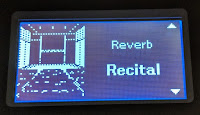 The next setting is called “Touch” and that function allows you to adjust the touch sensitive velocity “touch curve” with 5 different levels of key touch sensitivity from very light to very hard and that setting also has a big impact of the overall sound of the P515 and the quickness in which the piano sound comes in. However when you make an adjustment and change a level of touch, that also changes the brightness or mellowness level of the sound, but that’s true on all digital pianos with this feature.
The next setting is called “Touch” and that function allows you to adjust the touch sensitive velocity “touch curve” with 5 different levels of key touch sensitivity from very light to very hard and that setting also has a big impact of the overall sound of the P515 and the quickness in which the piano sound comes in. However when you make an adjustment and change a level of touch, that also changes the brightness or mellowness level of the sound, but that’s true on all digital pianos with this feature.
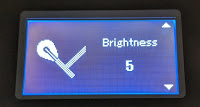
 Next after that Tuning function is the individual organic elements that reside within the P515 which are part of the acoustic grand piano samples. They include the “VRM” which is resonance modeling, “Damper Resonance” which effects the sound when using the sustain pedal, “String Resonance” which effects the sound of the virtual strings and the natural vibrations you would get from piano strings when playing, followed by “Aliquot Resonance,” “Body Resonance,” and “Key Off sample.” Also in the Piano Room settings is “Half-pedal Point” which allows you to modify and control the way the sustained piano sound comes in when using the proper single pedal or adding the optional triple pedal unit to the P515. Otherwise it has no effect with the included piano pedal that comes with the P515. So when you need to make relatively quick changes to your piano sound the the “Piano Room” button is what you press to do that and then scroll down to the function you want to change/edit to customize your piano sound.
Next after that Tuning function is the individual organic elements that reside within the P515 which are part of the acoustic grand piano samples. They include the “VRM” which is resonance modeling, “Damper Resonance” which effects the sound when using the sustain pedal, “String Resonance” which effects the sound of the virtual strings and the natural vibrations you would get from piano strings when playing, followed by “Aliquot Resonance,” “Body Resonance,” and “Key Off sample.” Also in the Piano Room settings is “Half-pedal Point” which allows you to modify and control the way the sustained piano sound comes in when using the proper single pedal or adding the optional triple pedal unit to the P515. Otherwise it has no effect with the included piano pedal that comes with the P515. So when you need to make relatively quick changes to your piano sound the the “Piano Room” button is what you press to do that and then scroll down to the function you want to change/edit to customize your piano sound.
 With regard to the single pedal that comes with the piano, although it’s a good pedal, it does not trigger the “half-damper” pedal effect which allows for a variable amount of sustain when pressing the pedal down based on the position of the pedal. Having a 1/2-damper sustain pedal is important if you want a more realistic piano playing experience like you would get on a real acoustic piano. You could purchase a separate single pedal by Yamaha that would trigger this important function but unfortunately Yamaha does not include that pedal with the P515 (a way to get you to spend more money). The triple pedal furniture style unit for the P515 is called the LP1 and it costs $75 to add to the P515.
With regard to the single pedal that comes with the piano, although it’s a good pedal, it does not trigger the “half-damper” pedal effect which allows for a variable amount of sustain when pressing the pedal down based on the position of the pedal. Having a 1/2-damper sustain pedal is important if you want a more realistic piano playing experience like you would get on a real acoustic piano. You could purchase a separate single pedal by Yamaha that would trigger this important function but unfortunately Yamaha does not include that pedal with the P515 (a way to get you to spend more money). The triple pedal furniture style unit for the P515 is called the LP1 and it costs $75 to add to the P515. The beauty of the piano sound is not only determined by the original piano sound sample but also by the ability of the piano sound to have a long and resonant sustain/decay time which means the piano sound (the notes you play) will sustain for a long period of time when holding down the pedal just as it would in a real acoustic piano. This has been a major issue in the past for Yamaha because most all of their digital pianos had very short, unrealistic sustain/decay times that made the piano playing sound somewhat choppy and artificial.
The beauty of the piano sound is not only determined by the original piano sound sample but also by the ability of the piano sound to have a long and resonant sustain/decay time which means the piano sound (the notes you play) will sustain for a long period of time when holding down the pedal just as it would in a real acoustic piano. This has been a major issue in the past for Yamaha because most all of their digital pianos had very short, unrealistic sustain/decay times that made the piano playing sound somewhat choppy and artificial.
The P-515 technology has taken care of these past issues and now the sustain time, sustain volume, and sustained tone are very impressive and very natural across the keyboard.Using the new piano sound chip with the 256-note polyphony power and better sound samples, the piano sound, particularly the Bosendorfer piano sound, is quite pleasing to the ear and the piano sound is much better than in the past, especially when using the sustain half-damper pedal with all those sustained piano sound nuances.
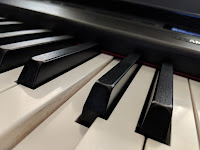 When it comes to having a great piano playing experience in this price range, it is the key action that can make or break a digital piano, and the P515 is no exception. Yamaha has replaced the previous plastic piano weighted key action (called GH) that was in the former P255 with a new wooden key action in the under-$2000-price-range called NWX. The white keys are made of wood but the black keys are still all-plastic. The white keys have smooth-top synthetic ivory-feel surfaces on them to enhance the tactile feel of those keys and the black keys have a smooth-top matte black finish to them which is quite nice and feels good to the fingers.
When it comes to having a great piano playing experience in this price range, it is the key action that can make or break a digital piano, and the P515 is no exception. Yamaha has replaced the previous plastic piano weighted key action (called GH) that was in the former P255 with a new wooden key action in the under-$2000-price-range called NWX. The white keys are made of wood but the black keys are still all-plastic. The white keys have smooth-top synthetic ivory-feel surfaces on them to enhance the tactile feel of those keys and the black keys have a smooth-top matte black finish to them which is quite nice and feels good to the fingers.
 The NWX key action has 3-sensors underneath each key for better key repetition response when playing faster pieces regardless of where the key is positioned during key travel. The key action is stable and quiet when the keys are moving and Yamaha has has a fairly good reputation out there for reliable key actions over the years. With this NWX key action in a portable digital piano under $2000 you would think that having all-wood white keys would be a very big thing, especially considering that no other portable digital piano under $2000 has this feature.
The NWX key action has 3-sensors underneath each key for better key repetition response when playing faster pieces regardless of where the key is positioned during key travel. The key action is stable and quiet when the keys are moving and Yamaha has has a fairly good reputation out there for reliable key actions over the years. With this NWX key action in a portable digital piano under $2000 you would think that having all-wood white keys would be a very big thing, especially considering that no other portable digital piano under $2000 has this feature. So as far as I am concerned this escapement feature has little impact one way or the other on your piano playing. The letter “X” in NWX stands for the “escapement” (aka: let-off) in the key action.But there is one major caveat to this key action (both black & white keys) and one that a person might not expect, and that is the keys are unusually heavy (firm) to press down with the fingers.
So as far as I am concerned this escapement feature has little impact one way or the other on your piano playing. The letter “X” in NWX stands for the “escapement” (aka: let-off) in the key action.But there is one major caveat to this key action (both black & white keys) and one that a person might not expect, and that is the keys are unusually heavy (firm) to press down with the fingers.
In other words, when you are playing your music on the P515, the keys take a lot of extra effort (force) to press down, especially as compared to a good acoustic upright or grand piano or any of the other self-contained portable digital pianos out there including Roland, Korg, Casio, Kawai, and a few others. I am not saying that this NWX key action is unplayable because it is definitely playable for some people. But at least for me and many people I know who play well, I am definitely not a fan of the way the key action feels/moves in the P515.
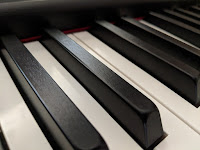 When I play music on a piano I want to be able to express myself musically without an undue amount of effort. When I want to play a light, soft passage of music I want to be able to press the key easily without too much force and yet have it come back up quickly so I can play faster and more lightly. When I strike the key harder then I want a lot of quick movement (without being too quick) and for the key action to allow me to be expressive. To that end it is well known that the “weight” of the keys in going down and coming back up is referred to as “static and/or dynamic down-weight” and “up-weight” (resistance).
When I play music on a piano I want to be able to express myself musically without an undue amount of effort. When I want to play a light, soft passage of music I want to be able to press the key easily without too much force and yet have it come back up quickly so I can play faster and more lightly. When I strike the key harder then I want a lot of quick movement (without being too quick) and for the key action to allow me to be expressive. To that end it is well known that the “weight” of the keys in going down and coming back up is referred to as “static and/or dynamic down-weight” and “up-weight” (resistance).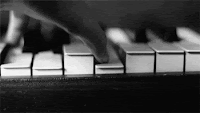 There is a certain amount of force needed for the key to (begin) to press down and a certain amount of force (resistance) when the key is coming back up against your fingers. This force or weight is measurable and done in grams. In fact, qualified piano technicians are able to set up an acoustic grand or upright piano action to perform at proper standards by adjusting the key weight going down and coming back up. The keys themselves have no weight or resistance in them because they are (by themselves out of the piano) very light…they are just plastic and light wood material. It’s the added weight inside the keys or attached to the key action that gives the keys their “weight” or firmness.
There is a certain amount of force needed for the key to (begin) to press down and a certain amount of force (resistance) when the key is coming back up against your fingers. This force or weight is measurable and done in grams. In fact, qualified piano technicians are able to set up an acoustic grand or upright piano action to perform at proper standards by adjusting the key weight going down and coming back up. The keys themselves have no weight or resistance in them because they are (by themselves out of the piano) very light…they are just plastic and light wood material. It’s the added weight inside the keys or attached to the key action that gives the keys their “weight” or firmness. When someone is looking for a digital piano and wants a good feeling, good moving key action, the keys should not be too heavy to push down nor they take long in coming back up but should not come back up with too much force. For digital pianos, since key actions are definitely not adjustable in terms of the physical weight or movement like they are in regular acoustic pianos, whatever key action movement you get in a digital piano cannot be physically altered…it is permanent. However, you can electronically adjust the “touch sensitivity curve” of the key action
When someone is looking for a digital piano and wants a good feeling, good moving key action, the keys should not be too heavy to push down nor they take long in coming back up but should not come back up with too much force. For digital pianos, since key actions are definitely not adjustable in terms of the physical weight or movement like they are in regular acoustic pianos, whatever key action movement you get in a digital piano cannot be physically altered…it is permanent. However, you can electronically adjust the “touch sensitivity curve” of the key actionwhich makes the sound come in more or less quickly depending on how hard or fast you play the keys. Although the electronic adjustment does help a bit in adjusting key action sound response when pressing down the keys lightly, this does nothing to adjust the actual physical weight of the keys going down or coming up.
I’m still OK with that down weight coming closer to under 75 grams for static key touch force going down and approx 40 to 45 grams going up…at least that’s the maximum limit I would recommend where your hands and fingers don’t start feeling fatigued and tired over a relatively short period of playing time. Playing the piano should be an enjoyable, comfortable experience and the key action is the main thing that will allow for you to have that experience…although piano tone and pedaling are also obviously important as well.
 So where does the Yamaha NWX action weigh in when it comes to key movement and comfort along with expression? Although the NWX key action is certainly not the heaviest key action in the Yamaha digital piano line-up, it is still rather heavy comparatively to many other competitive digital pianos in it’s general price range and certainly much heavier than real acoustic grand pianos.Not only do many people get the “perception” that the keys in the P-515 are extra firm when pressing them down, but the measurable weight (based on my personal experience measuring it) is approx 85 grams of static down-weight (aka: touch-weight) and approx 45 grams of up-weight when the measurement is taken on the white middle C key.
So where does the Yamaha NWX action weigh in when it comes to key movement and comfort along with expression? Although the NWX key action is certainly not the heaviest key action in the Yamaha digital piano line-up, it is still rather heavy comparatively to many other competitive digital pianos in it’s general price range and certainly much heavier than real acoustic grand pianos.Not only do many people get the “perception” that the keys in the P-515 are extra firm when pressing them down, but the measurable weight (based on my personal experience measuring it) is approx 85 grams of static down-weight (aka: touch-weight) and approx 45 grams of up-weight when the measurement is taken on the white middle C key.
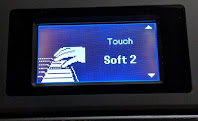
Also, when you change the touch sensitivity curve from medium to light or lighter this also slightly changes the tonal dynamics of the piano sound when playing softer because the piano sound automatically comes in initially somewhat brighter in tone…that’s just the way it works. So when you change touch sensitivity curve it is also changing the piano tone as well and boosting brightness artificially along with the piano sound coming in more quickly than normal because the touch is set to “light” or even “lighter.” When you experience this for yourself you will know better what I am talking about.
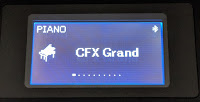 Let’s move on to the other instrument sounds in the P-515. There are 10 acoustic piano sounds or variations of acoustic pianos including bright piano, studio piano, rock piano, honky-tonk, and others. Unless you are playing in a rock band or you love honky-tonk music and know how to play it, in my opinion (as I previously mentioned) the 3 main usable acoustic piano sounds include the CFX, Bosendorfer, and Ballad acoustic piano.
Let’s move on to the other instrument sounds in the P-515. There are 10 acoustic piano sounds or variations of acoustic pianos including bright piano, studio piano, rock piano, honky-tonk, and others. Unless you are playing in a rock band or you love honky-tonk music and know how to play it, in my opinion (as I previously mentioned) the 3 main usable acoustic piano sounds include the CFX, Bosendorfer, and Ballad acoustic piano.
The rest of them are noticeably brighter. There are 7 electric piano sounds including vintage tones from the Wurlitzer electric, Rhodes, and DX7 among others and they’re all quite good and usable whether playing them individually or layered with other instrument sounds. There are 6 organ tones including pop, jazz, and pipe organs and all are very good along with a couple of very nice harpsichords, vibes, and clavichord. String and choir sounds are always popular and Yamaha has 2 each along with 3 “pad” (synth) tones which are very good for sustained fill-in sounds (as long as you hold down keys) played separately or layered with pianos…and they are impressive. There are different types of bass tones used when splitting the keyboard into separate left & part hand parts.
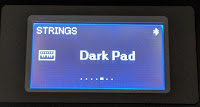
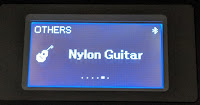 However, this Yamaha XG sound library is something that Yamaha has had for many years in a number of their digital pianos and it’s a mixed bag of sounds with some of them being quite good, others average, and still others are poor (fake) in terms of reproducing the actual instrument sound. It just depends on what sound you need and how you’ll be using it.
However, this Yamaha XG sound library is something that Yamaha has had for many years in a number of their digital pianos and it’s a mixed bag of sounds with some of them being quite good, others average, and still others are poor (fake) in terms of reproducing the actual instrument sound. It just depends on what sound you need and how you’ll be using it.
 XG sounds areparticularly useful and important when playing back General MIDI song files from a USB flashdrive when needing instruments like trumpets, marimbas, flutes, special effects and other tones which I will talk about more later. I am the kind of person who likes to experiment with mixing two instrument sounds together in a layer or even a split as well as combine tones in ways that make music more interesting. With all the XG instrument sounds and the 40 main sampled instrument tones, there are literally thousands of tonal combination possibilities. But for now you just need to know that the most important sounds in the P515 are the 40 instrument sounds I previously mentioned and the ability to quickly layer or split them depending on how you want to use those sounds.
XG sounds areparticularly useful and important when playing back General MIDI song files from a USB flashdrive when needing instruments like trumpets, marimbas, flutes, special effects and other tones which I will talk about more later. I am the kind of person who likes to experiment with mixing two instrument sounds together in a layer or even a split as well as combine tones in ways that make music more interesting. With all the XG instrument sounds and the 40 main sampled instrument tones, there are literally thousands of tonal combination possibilities. But for now you just need to know that the most important sounds in the P515 are the 40 instrument sounds I previously mentioned and the ability to quickly layer or split them depending on how you want to use those sounds.

 With the much heavier (firmer) key action of the P-515 as opposed to other brands and models including some other models of Yamaha digital pianos, it is a real pain (not very enjoyable) to play all those other instrument sounds that, on their own, would normally have a light key action such as harpsichords, guitars, electric pianos, strings, organs, synths, reeds, woodwinds, etc.So when playing any of those sounds on the P-515 I found that it was not conducive to having an enjoyable playing experience and much more difficult to control light, quick touch. You can manage a bit better with the acoustic piano sounds because you may be able to adapt to the extra firm (hard) NWX key action for piano playing…but not so much when using the other instrument sounds…it just doesn’t allow for a more delicate or subtle touch, especially when using most of those other instrument sounds…whether they are part of the 40 proprietary tones or they are part of the XG sound library. So what I am saying is…
With the much heavier (firmer) key action of the P-515 as opposed to other brands and models including some other models of Yamaha digital pianos, it is a real pain (not very enjoyable) to play all those other instrument sounds that, on their own, would normally have a light key action such as harpsichords, guitars, electric pianos, strings, organs, synths, reeds, woodwinds, etc.So when playing any of those sounds on the P-515 I found that it was not conducive to having an enjoyable playing experience and much more difficult to control light, quick touch. You can manage a bit better with the acoustic piano sounds because you may be able to adapt to the extra firm (hard) NWX key action for piano playing…but not so much when using the other instrument sounds…it just doesn’t allow for a more delicate or subtle touch, especially when using most of those other instrument sounds…whether they are part of the 40 proprietary tones or they are part of the XG sound library. So what I am saying is…
I wish Yamaha had designed the P-515 NWX key action in this model to be much lighter than it is so the playing experience, especially when using non-acoustic pianos sounds, would be more realistic and enjoyable to play since getting expression out of those instruments is otherwise a lot more difficult to do, particularly when playing the keys more softly and gently.
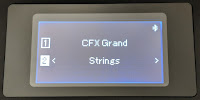 I personally love many different styles and types of music including classical piano, orchestral, symphony, jazz, Latin, pop, rock, oldies, country, western, blues, Christian, world music, and so on, and like playing all these styles on the piano. I also play guitar & organ, as well as synth so I like some of those sounds as well. When it comes to using the non-piano instrument sounds on digital pianos, it’s very common to want to use those sounds either by themselves (like organ, synth, strings, pads, choirs, French horns, etc) as well as combine/layer any one of the instrument sounds with the acoustic piano sound such as Bosendorfer piano with strings, Yamaha CFX acoustic piano with choir, etc.
I personally love many different styles and types of music including classical piano, orchestral, symphony, jazz, Latin, pop, rock, oldies, country, western, blues, Christian, world music, and so on, and like playing all these styles on the piano. I also play guitar & organ, as well as synth so I like some of those sounds as well. When it comes to using the non-piano instrument sounds on digital pianos, it’s very common to want to use those sounds either by themselves (like organ, synth, strings, pads, choirs, French horns, etc) as well as combine/layer any one of the instrument sounds with the acoustic piano sound such as Bosendorfer piano with strings, Yamaha CFX acoustic piano with choir, etc.

 This is commonly referred to as “Pedal Hold” in digital pianos. The piano sound (or other percussive sound) needs to work like a piano and the layered tones need to work like they would in real life where the strings do not decay, the choir does not decay (fade out), the organs keep sustaining, the synths and/or pads keep sustaining while the pedal is being held down, even though the piano sounds do decay and fade out when playing. If the piano sounds never decayed when holding the sustain pedal down and they stayed on all the time, the sound would be a big mess. So…with most digital piano brands, when holding down the sustain pedal and mixing 2 great sounds together like piano + strings, the pianos will fade out as normal but the strings will keep on being heard as long as you hold down your sustain pedal.
This is commonly referred to as “Pedal Hold” in digital pianos. The piano sound (or other percussive sound) needs to work like a piano and the layered tones need to work like they would in real life where the strings do not decay, the choir does not decay (fade out), the organs keep sustaining, the synths and/or pads keep sustaining while the pedal is being held down, even though the piano sounds do decay and fade out when playing. If the piano sounds never decayed when holding the sustain pedal down and they stayed on all the time, the sound would be a big mess. So…with most digital piano brands, when holding down the sustain pedal and mixing 2 great sounds together like piano + strings, the pianos will fade out as normal but the strings will keep on being heard as long as you hold down your sustain pedal.  This is true if you just play one of those sounds at a time such as pipe organ or choir. As long as you hold down the sustain pedal then that organ or choir sound will continue to play on those notes, until you release the sustain pedal. It works well that way on Roland, Kawai, Casio, Korg, and other brands of digital pianos…but not on Yamaha.
This is true if you just play one of those sounds at a time such as pipe organ or choir. As long as you hold down the sustain pedal then that organ or choir sound will continue to play on those notes, until you release the sustain pedal. It works well that way on Roland, Kawai, Casio, Korg, and other brands of digital pianos…but not on Yamaha.
If Yamaha at least provided the option to have the sustain pedal trigger continuous sustain for the other sustaining type sounds, then that would fix the issue. Kawai provides that option so I know it can be done, but Yamaha does not. When I am spending $1500 on a digital piano I don’t want these kinds of irritations and this certainly is one…at least it is for me. If the other brands can do it then certainly Yamaha could…but they have chosen not to and that’s a bad decision as far as I am concerned.
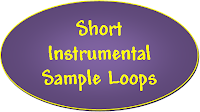 It is interesting to note that although the acoustic piano sound technology is very good in the P-515 along with other percussive sounds such as harpsichords, vibes, guitars, etc, the technology for the sustaining legato instrument sounds such as organs, strings, choirs, pads, etc, is no impressive at all. I thought that these instrumental tones would be as lifelike as the pianos are with no sampled loops being heard. But unfortunately the sample loops of those other sounds are so short that you hear a very noticeable repeat loop about once every second or so when holding down a note as you are playing any of those sounds.
It is interesting to note that although the acoustic piano sound technology is very good in the P-515 along with other percussive sounds such as harpsichords, vibes, guitars, etc, the technology for the sustaining legato instrument sounds such as organs, strings, choirs, pads, etc, is no impressive at all. I thought that these instrumental tones would be as lifelike as the pianos are with no sampled loops being heard. But unfortunately the sample loops of those other sounds are so short that you hear a very noticeable repeat loop about once every second or so when holding down a note as you are playing any of those sounds.  When you sustain that tone for longer than 1 second while holding down the keys you definitely hear that artificial looped movement and unfortunately it sounds fake, especially the strings, choir, pads, etc.To me that is disappointing because the initial sound sample themselves of the organs, choirs, strings, pads, synths, and other continuous tones are impressive and sound real in terms of the instrument itself. But once you get that sustained fast loop going and hear it while playing a song and holding keys down for more than a second or two,, then it can be a big distraction and you almost don’t want to use those sounds if they need to be sustained. Since Yamaha does not have continuous “pedal” sustain/hold for those sounds then that actually reduces the chance you’ll hear those repetitious loops that occur in those sounds.
When you sustain that tone for longer than 1 second while holding down the keys you definitely hear that artificial looped movement and unfortunately it sounds fake, especially the strings, choir, pads, etc.To me that is disappointing because the initial sound sample themselves of the organs, choirs, strings, pads, synths, and other continuous tones are impressive and sound real in terms of the instrument itself. But once you get that sustained fast loop going and hear it while playing a song and holding keys down for more than a second or two,, then it can be a big distraction and you almost don’t want to use those sounds if they need to be sustained. Since Yamaha does not have continuous “pedal” sustain/hold for those sounds then that actually reduces the chance you’ll hear those repetitious loops that occur in those sounds. 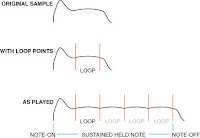
Perhaps that’s why Yamaha did it that way…so you don’t as easily hear the extremely short loop points on those sustaining tones such as the choirs, strings, organs, pads, etc. It’s too bad because as I mentioned, those instrument sounds are impressive but in reality are not very usable when sustaining them, which is what many people want to do with them. Once you start hearing those repetitious loops on those instruments then that’s what you tend to focus on and it’s a big distraction, at least it is for me. Sampled loops are normally found on most digital pianos but the ones on the P-515 are noticeable and annoying and for $1599 Yamaha should have done a lot better. There are a couple of other companies with sampling/physical modeling technology that don’t have noticeable loops on their sounds but Yamaha is only using that technology on their piano sounds, but not the others it seems.
I have a couple more concerns that I was surprised to find in this new model. Most portable digital pianos, especially in this price range, have the ability to add special effects to the instrument sound so it can be more realistic and organic and enable you to add things to the sound that can make your playing experience more enjoyable. To that end Yamaha has 3 very cool effects features called reverb (common in most digital pianos), Sound Boost (instant extra clarity and sharpness), and preset and programmable EQ (the ability to enhance the overall sound with boosting or reducing certain sound frequencies. All 3 of

these features do a very good job of allowing you to “tweak” the overall sound coming through the speakers or through headphones and I enjoy applying those effects.
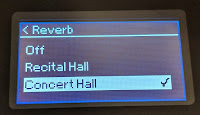
press the reverb button then that button brings you to a reverb menu in the LCD user display screen. In this mode you can set what type of reverb setting you want or you can scroll to an “off” setting and turn off the reverb from there, but again, there is no instant on/off reverb button from the panel. You can also press the “Piano Room” button on the control panel and scroll down to the Reverb type and also reverb amount. You can select changes in those functions within the Piano Room such as the amount of
reverb depth you will
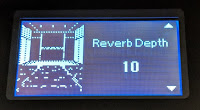
get for the particular reverb setting you previously selected (such as room, plate, concert, cathedral, etc), so that is a good thing.
You can also turn the reverb off from the piano room in scrolling to the “off button ” within the reverb settings there. However, as soon as you leave the Piano Room and go to another button/function, when you go back into the Piano Room to make another reverb adjustment or any other adjustment, the Piano Room functions start at the beginning again and you have to scroll back down to find reverb & reverb adjustments or other adjustments you want to do. That’s definitely not an efficient or intuitive operating system but maybe Yamaha will come up with a fix for this in the future. The reverb tones themselves sound great…it’s just accessing them quickly that is not great in the P515.
The Sound Boost and EQ settings are great features to have on the P-515 and especially useful for pro players who like to “dial in” their sound. But unfortunately these to functions are also not especially “user friendly” in terms of controlling them and those functions are important to the overall sound. You can access both of those features from one panel button labeled “Sound Boost/EQ. means that neither function has its own button on/off button from the panel. When you press sound boost button then it first takes you into the “Sound Boost” LCD menu and then you have to find the Sound Boost setting you most prefer, turn it on or off from there and then select the specific Sound Boost setting. With the EQ feature, EQ editing can be useful and definitely help with overall sound output quality and frequency range depending on your ears and what you like to hear.
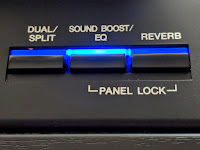 You can edit EQ in a number of ways including setting up your own custom EQ by changing the “user” 3 band EQ intensity which is accessed through the LCD display screen and changing the setting using the arrow navigation on the control panel to the right of the LCD screen. But again, the panel “Sound Boost/EQ” button does not turn those settings on or off and it is a separate feature from the Sound Boost function and yet they are on the same button with no main on/off button for each one. It is interesting to note that there is a button next to the Sound Boost/EQ button called “dual/split.” That button is dedicated to activating and changing the instrument layer combinations along with activating and changing the split sound mode.
You can edit EQ in a number of ways including setting up your own custom EQ by changing the “user” 3 band EQ intensity which is accessed through the LCD display screen and changing the setting using the arrow navigation on the control panel to the right of the LCD screen. But again, the panel “Sound Boost/EQ” button does not turn those settings on or off and it is a separate feature from the Sound Boost function and yet they are on the same button with no main on/off button for each one. It is interesting to note that there is a button next to the Sound Boost/EQ button called “dual/split.” That button is dedicated to activating and changing the instrument layer combinations along with activating and changing the split sound mode.
 That would have been an easy solution and other digital piano companies have similar operational settings in that way so it’s not rocket science. The dual/split button mode works well and does what I would expect it to do. You can even press and hold the dual/split button and touch any key at the same time and that selects where your right and left hand separate when using the split mode to get a different left and right hand sound at the same time…that’s a smart way to do it.
That would have been an easy solution and other digital piano companies have similar operational settings in that way so it’s not rocket science. The dual/split button mode works well and does what I would expect it to do. You can even press and hold the dual/split button and touch any key at the same time and that selects where your right and left hand separate when using the split mode to get a different left and right hand sound at the same time…that’s a smart way to do it.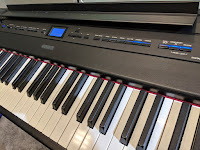 By now some of you may have the opinion that I might not be fond of this new piano…but that’s not true. The problem for me is that I do like it a lot because it is clean looking, uncluttered, layed out nicely, has some impressive features, and most importantly has 2 great acoustic piano sounds. But at this price range and for how new it is I would have expected Yamaha to take it up another notch and not have the issues I have described so far concerning the P-515. However, I am especially impressed with few of the acoustic piano sounds, the natural piano tonal resonances, the pedaling, the piano decay/sustain quality and sustain time of those piano sounds, and the powerful and dynamic internal speaker system. I also like many of the other instrument sounds too as I mentioned.
By now some of you may have the opinion that I might not be fond of this new piano…but that’s not true. The problem for me is that I do like it a lot because it is clean looking, uncluttered, layed out nicely, has some impressive features, and most importantly has 2 great acoustic piano sounds. But at this price range and for how new it is I would have expected Yamaha to take it up another notch and not have the issues I have described so far concerning the P-515. However, I am especially impressed with few of the acoustic piano sounds, the natural piano tonal resonances, the pedaling, the piano decay/sustain quality and sustain time of those piano sounds, and the powerful and dynamic internal speaker system. I also like many of the other instrument sounds too as I mentioned.
It’s just that Yamaha, in my opinion, did not keep its eye on the ball to deliver a great new digital piano across the board. This piano has so much potential because if has so many cool features including 40 built-in drum rhythm patterns that sound great with very realistic percussion along with automatic bass lines depending on what chords you are playing.
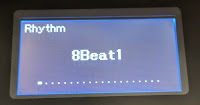 There are many other “backing-track” digital pianos out there including models by Yamaha and most of those models have built-in drum breaks, drum fills and alternative drum patterns within the regular pattern that can be triggered when playing songs by pressing a dedicated button and/or foot pedal. The bass line will even change depending on the drum fill and/or alternate drum pattern. However, on the P-515, although there are 40 different drum patterns each with their own bass line which never change, there are no drum beaks, no drum fills, no alternate drum patterns, and no alternate bass lines. In other words, the P-515 backing tracks, as good as they sound otherwise, are not even as realistic or useful as some of Yamaha’s $200 keyboards with backing tracks…and I am not exaggerating.
There are many other “backing-track” digital pianos out there including models by Yamaha and most of those models have built-in drum breaks, drum fills and alternative drum patterns within the regular pattern that can be triggered when playing songs by pressing a dedicated button and/or foot pedal. The bass line will even change depending on the drum fill and/or alternate drum pattern. However, on the P-515, although there are 40 different drum patterns each with their own bass line which never change, there are no drum beaks, no drum fills, no alternate drum patterns, and no alternate bass lines. In other words, the P-515 backing tracks, as good as they sound otherwise, are not even as realistic or useful as some of Yamaha’s $200 keyboards with backing tracks…and I am not exaggerating.I would give them a grade of “C’ on this one. It would have been a grade of “D” but at least they have “some type” of backing track system instead of nothing…so it’s definitely better than models without this feature and this kind of thing can be used for practicing some tunes, recording songs with rhythm backing tracks, having a little fun, and keeping the beat in real time other than using the metronome.
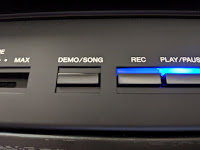 The P-515 has a number of other cool features that you can control from the LCD menu using the navigation arrow buttons on the control panel and a feature I like very much are the recording and playback functions. You can record a song in the “quick-record” mode, 2-track mode or 16-track midi mode which allows you to create and record a full 16-track (16 instrument sounds) MIDI recording and save it on a USB flashdrive. You can also record an wav file audio recording which is the actual audio sounds of the P-515 rather than the MIDI, and this feature is pretty cool although it is becoming more common to find on many different digital pianos these days.
The P-515 has a number of other cool features that you can control from the LCD menu using the navigation arrow buttons on the control panel and a feature I like very much are the recording and playback functions. You can record a song in the “quick-record” mode, 2-track mode or 16-track midi mode which allows you to create and record a full 16-track (16 instrument sounds) MIDI recording and save it on a USB flashdrive. You can also record an wav file audio recording which is the actual audio sounds of the P-515 rather than the MIDI, and this feature is pretty cool although it is becoming more common to find on many different digital pianos these days.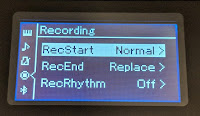
 When it comes to learning a playing a variety of music on the P-515, a great way to do that is to use General MIDI song files because not only are those files free or relatively inexpensive depending on the music you want, but you can transpose those songs to any key and slow down or speed up the song without degradation to the song itself. Generally speaking, audio song files cannot do that…only MIDI…especially multi-track MIDI files in being stable as compared to audio files for learning and play-along. However, for the digital piano to be able to play General MIDI multi-track, multi-instrument MIDI files, the piano needs to have the General MIDI format and instruments built into the piano. Without this format and instrument library the piano cannot play full General MIDI song files but the P-515 can play full 16-track General MIDI song files because it has the XG sound library of 480 instrument sounds including horns, reeds, woodwinds, brass of all kinds, percussion, etc.
When it comes to learning a playing a variety of music on the P-515, a great way to do that is to use General MIDI song files because not only are those files free or relatively inexpensive depending on the music you want, but you can transpose those songs to any key and slow down or speed up the song without degradation to the song itself. Generally speaking, audio song files cannot do that…only MIDI…especially multi-track MIDI files in being stable as compared to audio files for learning and play-along. However, for the digital piano to be able to play General MIDI multi-track, multi-instrument MIDI files, the piano needs to have the General MIDI format and instruments built into the piano. Without this format and instrument library the piano cannot play full General MIDI song files but the P-515 can play full 16-track General MIDI song files because it has the XG sound library of 480 instrument sounds including horns, reeds, woodwinds, brass of all kinds, percussion, etc. The Yamaha XG sound library is fullGeneral MIDI format and therefore the P-515 can play any General MIDI song file. This is actually a very cool thing in my opinion because there are thousands of MIDI song files available online (all your favorite music) and when you play them on GM capable digital pianos then you get to hear and playalong/singalong with any of those songs. In fact, most MIDI files are recorded as General MIDI song files and so they are the most popular digital (non-audio) songs of all especially because you can easily control the tempo, transposed key, and other aspects of controlling those song files depending on the digital piano functions.
The Yamaha XG sound library is fullGeneral MIDI format and therefore the P-515 can play any General MIDI song file. This is actually a very cool thing in my opinion because there are thousands of MIDI song files available online (all your favorite music) and when you play them on GM capable digital pianos then you get to hear and playalong/singalong with any of those songs. In fact, most MIDI files are recorded as General MIDI song files and so they are the most popular digital (non-audio) songs of all especially because you can easily control the tempo, transposed key, and other aspects of controlling those song files depending on the digital piano functions.
 The GM songs will only sound as good as the quality of the GM/XG instrument sounds built into the digital piano so in the case of the P-515 those sounds work well when the P515 is playing those types of files. In other words, if you play a popular jazz song, movie theme, and other type of music, even though it’s not the actual song CD/MP3 file recording of it, the General MIDI multi-track version is pretty good and can sound fairly real…depending on the song and the instruments you are hearing. So if I am playing the them from Star Wars, a jazz piece from Count Basie, A Disney song from Beauty & the Beast, a rock tune from Toto, or a orchestrated classical piece such as Beethoven’s 5th symphony, the XG General MIDI sound Library works good and sounds good and you can have a lot of fun playing along with the songs on the P515 to better learn how they go or even just to sing with or play along with other instruments.
The GM songs will only sound as good as the quality of the GM/XG instrument sounds built into the digital piano so in the case of the P-515 those sounds work well when the P515 is playing those types of files. In other words, if you play a popular jazz song, movie theme, and other type of music, even though it’s not the actual song CD/MP3 file recording of it, the General MIDI multi-track version is pretty good and can sound fairly real…depending on the song and the instruments you are hearing. So if I am playing the them from Star Wars, a jazz piece from Count Basie, A Disney song from Beauty & the Beast, a rock tune from Toto, or a orchestrated classical piece such as Beethoven’s 5th symphony, the XG General MIDI sound Library works good and sounds good and you can have a lot of fun playing along with the songs on the P515 to better learn how they go or even just to sing with or play along with other instruments.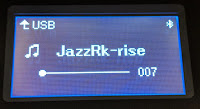
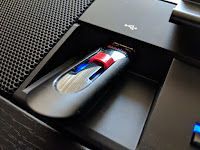
Personally I enjoy using MIDI song files, especially when wanting to sing along because I can easily transpose them into my vocal range or slow them down, and it’s very difficult to do that with audio files in digital pianos. To use MIDI files you simply connect a USB flashdrive containing your song files to the P515 USB device slot on the front of the piano control panel. From there you you access your songs from the front control panel by pressing the song button. Once you’ve pressed the button then you enter into the song menu and look for USB songs and press the navigation button on the control panel. Once you see the words “MUSICDAT” then you enter that function and your list of songs in the flashdrive will appear and you can play them from there.
 This means that when I am connecting with my favorite controller app, music app, music library (such as iTunes), or piano educational app, if that app has music in it then I hear that music automatically coming through the P-515 speaker system without the need for an audio cable connection…the audio portion of the app is transmitted through the USB cable coming back into the P-515. So a regular A to B USB cable can provide 2-way MIDI/Audio communication because the P-515 has audio streaming which is not the case with other brands…and that’s pretty cool.
This means that when I am connecting with my favorite controller app, music app, music library (such as iTunes), or piano educational app, if that app has music in it then I hear that music automatically coming through the P-515 speaker system without the need for an audio cable connection…the audio portion of the app is transmitted through the USB cable coming back into the P-515. So a regular A to B USB cable can provide 2-way MIDI/Audio communication because the P-515 has audio streaming which is not the case with other brands…and that’s pretty cool.
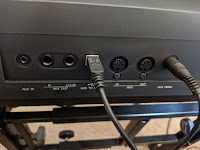 Other connectivity features include separate audio line outputs so you can connect to an external speaker system. Personally I don’t believe any external speaker system is need if you are playing in a small to medium size room in the home or smaller venue. Even in a larger room the P515 is sufficient. But if you’ll be playing in a very large building, church, school auditorium, etc then connecting to external speakers would be a good idea and you can do that on the P-515. There are also standard MIDI in/out ports for people who have older MIDI devices like keyboards, sound modules, etc so that you can connect your older MIDI device to the P515 using the standard MIDI ports.
Other connectivity features include separate audio line outputs so you can connect to an external speaker system. Personally I don’t believe any external speaker system is need if you are playing in a small to medium size room in the home or smaller venue. Even in a larger room the P515 is sufficient. But if you’ll be playing in a very large building, church, school auditorium, etc then connecting to external speakers would be a good idea and you can do that on the P-515. There are also standard MIDI in/out ports for people who have older MIDI devices like keyboards, sound modules, etc so that you can connect your older MIDI device to the P515 using the standard MIDI ports.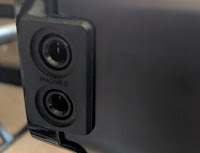
Also, Yamaha has provided an stereo audio input so that you can connect audio devices (computers, iPods, etc) to the P-515 and hear those devices through the internal speaker system of the P-515. This is very useful for people who have audio devices that don’t have Bluetooth audio connectivity or don’t have a USB connection. There’s also a single sustain pedal connection along with a proprietary connector for the option triple pedal unit that will attach to the P-515 optional stand. On the left front corner of the piano below the keys are two 1/4″ stereo headphone jacks to plug in up to 2 pair of stereo headphones for private practice or to use in the duo mode for 2 people playing at the same time. The P515 internal headphone amps have very good power output and provide plenty of volume for headphones. For a piano like this one it’s always better to invest in a higher quality pair of stereo headphones so the piano sound quality and bass response comes out better and more naturally…you’ll be glad you did.
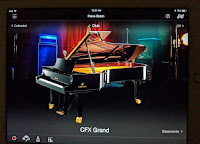 Beyond everything this new model can do from its control panel, Yamaha has a proprietary “controller app” for iOS devices (iPad, etc) which allows you to control most of the piano functions using the color touch screen of your external device. The name of this Yamaha app is called “Smart Pianist” and the app works for other Yamaha digital pianos as well as for the P-515 and it even adds extra features to the P-515 that are not already inside the piano. I like the app because overall it is a lot more intuitive to control (most of) the functions and features of the piano through your iPad color touch screen. It uses the familiar Apple iOS operating system and with all the experience I have in using an iPad in my studio with other music technology apps, I found the Smart Pianist a lot of fun to navigate and it makes the features of the piano (overall) much easier to access and understand. The first major feature in the app is the “Piano Room” setting.
Beyond everything this new model can do from its control panel, Yamaha has a proprietary “controller app” for iOS devices (iPad, etc) which allows you to control most of the piano functions using the color touch screen of your external device. The name of this Yamaha app is called “Smart Pianist” and the app works for other Yamaha digital pianos as well as for the P-515 and it even adds extra features to the P-515 that are not already inside the piano. I like the app because overall it is a lot more intuitive to control (most of) the functions and features of the piano through your iPad color touch screen. It uses the familiar Apple iOS operating system and with all the experience I have in using an iPad in my studio with other music technology apps, I found the Smart Pianist a lot of fun to navigate and it makes the features of the piano (overall) much easier to access and understand. The first major feature in the app is the “Piano Room” setting.

 If you want to layer/mix another instrument sound with that one then you select a 2nd sound from the sound list and an instrument picture of that sound will appear on the main screen as sound #2. If you want a separate left-hand sound for a “split” sound function then you touch the “split title” on the main page and a picture of a bass sound sill appear and if you want to change that sound you just touch the picture and it will take you to all of the instrument sound categories where you can choose another sound by touching it and then that will be your split sound. Once you set up your sounds on the main page then you can turn them on or off whenever you want just by tapping the picture button and that sound will disappear and turn off. The way I am describing this system to you may or may not sound easy but in reality a 3 year old or 93 year old person can do this without prior experience after just a couple tries.
If you want to layer/mix another instrument sound with that one then you select a 2nd sound from the sound list and an instrument picture of that sound will appear on the main screen as sound #2. If you want a separate left-hand sound for a “split” sound function then you touch the “split title” on the main page and a picture of a bass sound sill appear and if you want to change that sound you just touch the picture and it will take you to all of the instrument sound categories where you can choose another sound by touching it and then that will be your split sound. Once you set up your sounds on the main page then you can turn them on or off whenever you want just by tapping the picture button and that sound will disappear and turn off. The way I am describing this system to you may or may not sound easy but in reality a 3 year old or 93 year old person can do this without prior experience after just a couple tries.
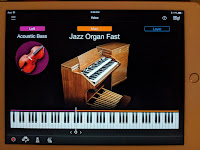 The “Smart Pianist” also allows you to do things the piano itself cannot do such as save your favorite instrument sounds into a “Favorites” page so that when you want to use your favorite sounds individually, in a layer, or in a split, you don’t have to search for the sound category and find the sound you want. You just go to your “Favorites” page and select the sound you want from the list of Favorites you have saved…it’s that easy. You can also save full registration (setup memories) in a “Registration” page in the app which is very cool because the piano itself does not have this function.
The “Smart Pianist” also allows you to do things the piano itself cannot do such as save your favorite instrument sounds into a “Favorites” page so that when you want to use your favorite sounds individually, in a layer, or in a split, you don’t have to search for the sound category and find the sound you want. You just go to your “Favorites” page and select the sound you want from the list of Favorites you have saved…it’s that easy. You can also save full registration (setup memories) in a “Registration” page in the app which is very cool because the piano itself does not have this function.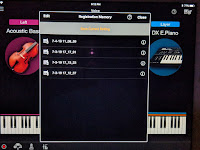
This allows you to save a “set-up” which includes all sounds, key change, reverb & EFX settings, and other functions so that you just go the the “Registration” page where you saved those setups and then you touch the one you want and it instantly activates that “registration memory” and you instantly have what you want without having to recreate it manually every-time you want it. Pretty much all the important functions that I previously mentioned which are in the P515 can be controlled from your iPad with the Smart Pianist app. This includes recording functions, metronome, drum rhythms & bass lines, touch curve, transpose, piano elements, etc. There are some things the app does not control but it does a very good job overall and as I just mentioned, it does things the piano itself does not do on its own including having a live 5-part digital volume (touch) mixer.
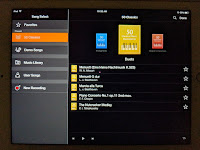 When it comes to playing songs in the piano, you can do that by pressing the song button and all of the songs that reside in the piano song library can be accessed including all General MIDI song files on the USB flashdrive. In the Smart Pianist app you would go to the virtual “song button” in the feature portion of the app and when you touch that virtual button all of the internal songs come up that are available in the piano and you can access and play them more easily from the app. When you see the song book and song you want on the page, you just touch it and then that song is instantly accessed and will play in the piano.
When it comes to playing songs in the piano, you can do that by pressing the song button and all of the songs that reside in the piano song library can be accessed including all General MIDI song files on the USB flashdrive. In the Smart Pianist app you would go to the virtual “song button” in the feature portion of the app and when you touch that virtual button all of the internal songs come up that are available in the piano and you can access and play them more easily from the app. When you see the song book and song you want on the page, you just touch it and then that song is instantly accessed and will play in the piano.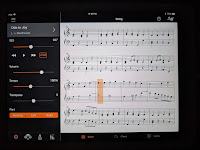
If it’s a regular MIDI song file from the classical music books in the piano then the sheet music will also be displayed in the app on your iPad so you can see the notes and play along as well as control tempo, key, volume and parts of the song that are playing back. You can isolate the left hand from the hand part which is very cool as well. The app also allows you to load songs from your iTune library so that you can listen and play along as well as even change the key or tempo to some degree and the songs from your MP3 files will also display accompaniment chords in a chord chart and the chords will be seen in a linear fashion as the song is playing so that you know what chords are in the song by instantly seeing them in the Smart Pianist chord chart. I have tries this many times and although it works well, it doesn’t always work for all songs or does not display the chords and chord changes correctly depending on the song. But overall it’s a great learning and fun music tool if you have iTunes.
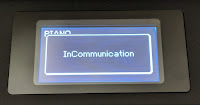 There is one downside to using the Smart Pianist app which is personally annoying to me (although it won’t matter to other people) and that is when you access the app, it instantly shuts off access to the piano control panel or LCD display screen. In other words you cannot use the piano control panel, display screen, or any features within the piano at the same time as you are using the app. The display screen reads “in-communication” with the app and then all piano controls are frozen and display screen is non functioning. Well…you might think this is no big deal because after-all, you’re using the app so why would you want or need to also access the piano functions from the piano?
There is one downside to using the Smart Pianist app which is personally annoying to me (although it won’t matter to other people) and that is when you access the app, it instantly shuts off access to the piano control panel or LCD display screen. In other words you cannot use the piano control panel, display screen, or any features within the piano at the same time as you are using the app. The display screen reads “in-communication” with the app and then all piano controls are frozen and display screen is non functioning. Well…you might think this is no big deal because after-all, you’re using the app so why would you want or need to also access the piano functions from the piano?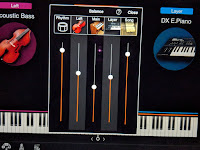
 using the app is that the app can not control or give access to General MIDI song files that are on your USB flash drive so that you cannot play or activate the flashdrive songs from the piano and there is no way to use it through the app. The app will not display the songs on the flashdrive and/or give you control over it so to do that you would need to disconnect the tablet from the piano and take out the cable. Obviously this Yamaha app is not “perfect” (what app is ever perfect?) but it’s very good and quite useful in many ways. I will say that having the app and the piano control panel/display screen work simultaneously must not be “rocket science” because Casio’s proprietary new controller app for iPad & Android called “Chordana Play for Piano,” works simultaneously with its piano control panel on new portable pro models called PXS series, and in a lower price range.
using the app is that the app can not control or give access to General MIDI song files that are on your USB flash drive so that you cannot play or activate the flashdrive songs from the piano and there is no way to use it through the app. The app will not display the songs on the flashdrive and/or give you control over it so to do that you would need to disconnect the tablet from the piano and take out the cable. Obviously this Yamaha app is not “perfect” (what app is ever perfect?) but it’s very good and quite useful in many ways. I will say that having the app and the piano control panel/display screen work simultaneously must not be “rocket science” because Casio’s proprietary new controller app for iPad & Android called “Chordana Play for Piano,” works simultaneously with its piano control panel on new portable pro models called PXS series, and in a lower price range.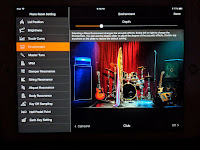
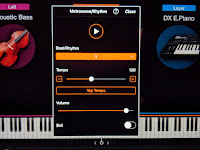
 I wanted to specifically mention the internal speaker system in the P-515. There is a total of 40 watts of power going into 4 amplifiers and 4 speakers and the way that Yamaha designed that internal system allows for a much clearer tone and more precise bass response along with plenty of power without noticeable distortion. The built-in EQ feature in the piano allows you to precisely control the lows, medium, and high frequency tones in the P-515 for live play and recorded playback from song files. I can tell you that from my personal experience playing a lot of hours through the P-515 internal speaker system that it is by far the best sound I have ever heard coming through a portable digital piano under $2000 expect for the new Kawai ES920 ($1799 price). The overall sound is very impressive and the bass response is tight and precise without being boomy.
I wanted to specifically mention the internal speaker system in the P-515. There is a total of 40 watts of power going into 4 amplifiers and 4 speakers and the way that Yamaha designed that internal system allows for a much clearer tone and more precise bass response along with plenty of power without noticeable distortion. The built-in EQ feature in the piano allows you to precisely control the lows, medium, and high frequency tones in the P-515 for live play and recorded playback from song files. I can tell you that from my personal experience playing a lot of hours through the P-515 internal speaker system that it is by far the best sound I have ever heard coming through a portable digital piano under $2000 expect for the new Kawai ES920 ($1799 price). The overall sound is very impressive and the bass response is tight and precise without being boomy.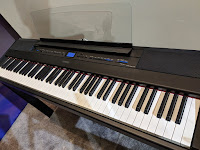 Yamaha did an outstanding job with the cabinet design and cabinet finish on the P-515 in my opinion by making it look a lot more “upscale” than any previous models they have had by using nice (quality) looking materials, better construction, contemporary design elements that add a bit of elegance to it, as well as nice looking button layout and shapes, and larger/better user display screen size and style. The previous model P255 in black had some black shiny plastic plex on the interior of the control panel which scratched easily and just looked bad. On this new model Yamaha got rid of all that and improved design and materials, although to give the P-515 that more “elegant” appearance they redesigned the top outside cabinet panels into a more interesting geometric shape and used that black plastic plex material there to give the piano a “polished black” appearance on those sides.
Yamaha did an outstanding job with the cabinet design and cabinet finish on the P-515 in my opinion by making it look a lot more “upscale” than any previous models they have had by using nice (quality) looking materials, better construction, contemporary design elements that add a bit of elegance to it, as well as nice looking button layout and shapes, and larger/better user display screen size and style. The previous model P255 in black had some black shiny plastic plex on the interior of the control panel which scratched easily and just looked bad. On this new model Yamaha got rid of all that and improved design and materials, although to give the P-515 that more “elegant” appearance they redesigned the top outside cabinet panels into a more interesting geometric shape and used that black plastic plex material there to give the piano a “polished black” appearance on those sides.
The optional stand and triple pedal unit are also nicely designed and work well if you want the P515 to be more like a piano. The dimensions of the P-515 are 53″ x 6″ x 15″ deep with the weight coming in at 48.5 lbs not including optional stand, pedals, case, etc.
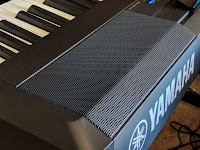 In the final analysis the P-515 is an impressive piano, but with some negative caveats. I obviously like many aspects of this model but my main hang-up with it is the key action being heavy making it more difficult to control the key volume and dynamics, especially when playing more softly (too firm down-weight) particularly for a portable product. Key action is the #1 thing that piano teachers and pro players (like me) consider to be important and everything else comes after that. But besides key action and a few quirks that the P-515 has that I have previously mentioned, I believe there are a number of people who will like this model and will find it to be enjoyable to play.
In the final analysis the P-515 is an impressive piano, but with some negative caveats. I obviously like many aspects of this model but my main hang-up with it is the key action being heavy making it more difficult to control the key volume and dynamics, especially when playing more softly (too firm down-weight) particularly for a portable product. Key action is the #1 thing that piano teachers and pro players (like me) consider to be important and everything else comes after that. But besides key action and a few quirks that the P-515 has that I have previously mentioned, I believe there are a number of people who will like this model and will find it to be enjoyable to play.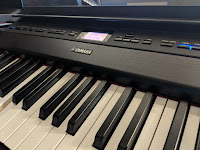
However, I do have a number of piano player and piano teacher friends who are excellent musicians and have had a chance to try out this P-515 and many of them thought the key action was noticeably heavy compared to what they were used to playing on their acoustic pianos which include Steinway, Yamaha, and Kawai grand pianos along with a few assorted upright/console acoustic pianos. When playing lightly and wanting to press on the keys more easily is where the extra down-weight is more noticeable and could become fatiguing after playing for a while and also more difficult to play in general for younger children or those people with weaker hand & finger muscles. But aside from the key action issues (which are important), the rest of the piano (minus the shortcomings I have talked about) is impressive and might be the perfect digital piano choice for you.
 Between the price range of $1500 to approx $2500, the 5 main portable digital pianos in this category are the Yamaha P-515, the newer Kawai ES920 at $1899, the Roland FP-90X at $2199, the new Casio PX-S6000 at $1799, and the new Casio PX-S7000 at $2499. I would recommend that you should especially read my reviews of the Kawai ES920 and the 2 Casio models before making a purchase decision, because for me personally, the Kawai and Casio models respond a lot more like a high quality acoustic piano than does the Yamaha P-515 when it comes to key action authenticity and piano sound. Kawai ES920 Review. Casio PX-S6000 & S7000 Review.
Between the price range of $1500 to approx $2500, the 5 main portable digital pianos in this category are the Yamaha P-515, the newer Kawai ES920 at $1899, the Roland FP-90X at $2199, the new Casio PX-S6000 at $1799, and the new Casio PX-S7000 at $2499. I would recommend that you should especially read my reviews of the Kawai ES920 and the 2 Casio models before making a purchase decision, because for me personally, the Kawai and Casio models respond a lot more like a high quality acoustic piano than does the Yamaha P-515 when it comes to key action authenticity and piano sound. Kawai ES920 Review. Casio PX-S6000 & S7000 Review.If you want more info on new digital pianos and LOWER PRICES than internet discounts, please email me at tim@azpianowholesale.com or call direct at 602-571-1864.
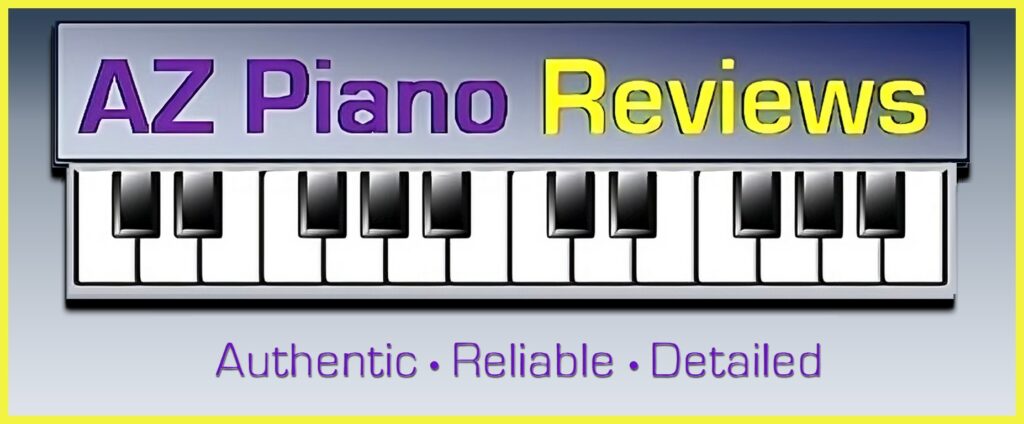


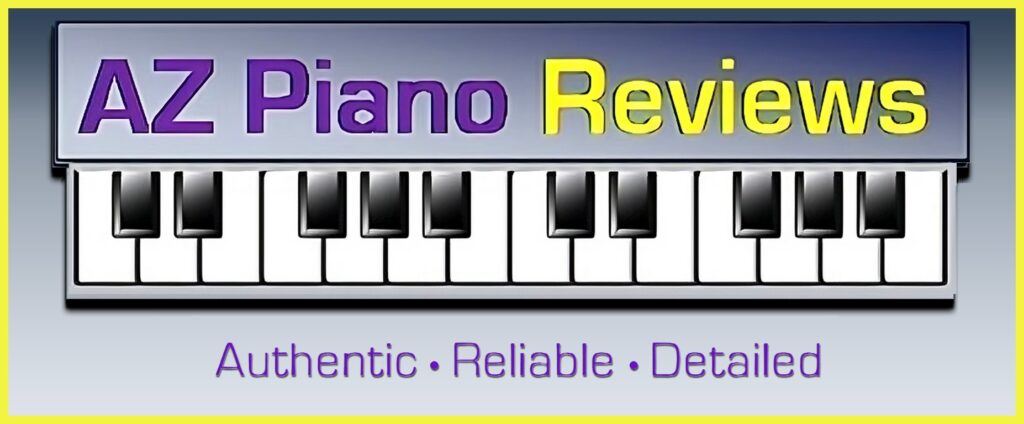

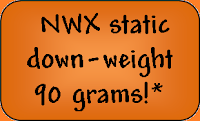
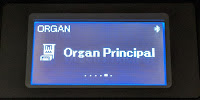
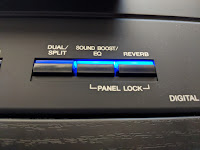
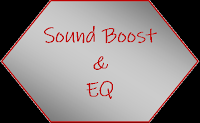
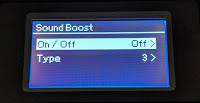
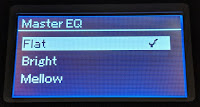
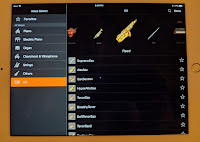
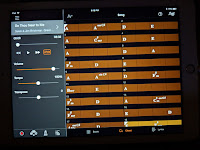




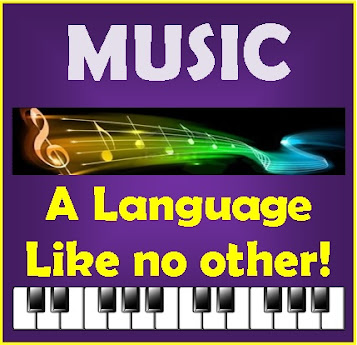

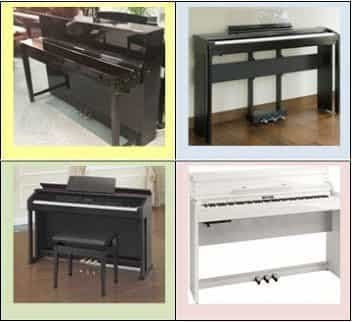


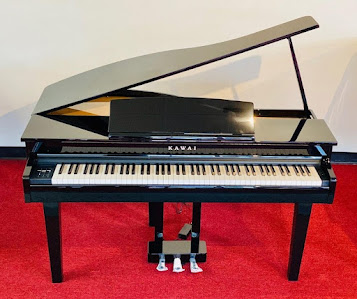
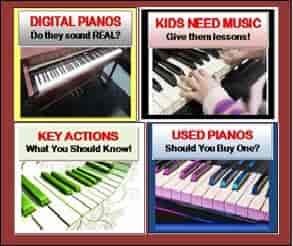
Thankyou for your review which was very helpful. I was interested in purchasing the Yamaha P 515, but after listening to many videos on the P515, I have found that there were some things that I did not like. I have a Yamaha Pro 9000 which I bought many years ago which I have enjoyed but would now like to purchase a similar keyboard with soft keys and I wonder if you would be able to help me. I have heard many different keyboards on the Internet but would dearly love your advice. Cost around $2000 76- 88 keys. I live in Melbourne Australia.
Hopefully I will hear from you, Thankyou, Margaret Bethune.
Interesting had a world renowned piano player and musician who found this instrument outstanding, especially the key action being weighted closely to a real piano….So….
Thanks Tim for your thorough review.
Which setting is the "lightest"…Soft 1 or Soft 2?
I couldnt find the answer in the manual.thanks.
Soft #2
Impressive! No stone left un-turned. Thank you for a most comprehensive review. I needed this.
Lucien
What makes me want the Yamaha is the Smart Pianist App. I have over $1000 invested in iTunes music. I'm a jazz player and use chord progressions extensively in playing and improvising. An App that gives me the chords in a song, will speed up or slow down the song, transpose it etc. is invaluable. As far as I know the apps for other pianos don't do this. Also, being able to record a song onto a thumb drive and transfer it to a computer and a CD is also invaluable. Although touch and tone are important I find that most reviewers spend a huge amount of time on these and very little on connectivity and apps. For me (I've been playing all of my life and I'm 78 years old) all of the major brands have good sound but what interests me is what you can do with the piano (and I'm not talking about elaborate composing or arranger keyboards like the high end Nord, Korg etc.)
Is there any other app or software that will analyze and display the chords of a song you have stored on your computer or other smart device???
Hi
Hope you are well and keeping safe. Can you assist with the settings that I need to get the closest feel to an acoustic piano. I am not looking predominantly at the sound but want to ensure the action I use is correct. Sorry I don't think I am explaining myself very well. I don't want the P515 to play it for me, rather I want to play it as I would an acoustic.
Also the pedal settings using the 3 pedal system. I decided to do a factory reset with sad regret.
I use the P515 to allow me to practice late without disturbing the neighbours and are lucky to have a 1925 Steinway upright.
Look forward to receiving advice
Blessings to you